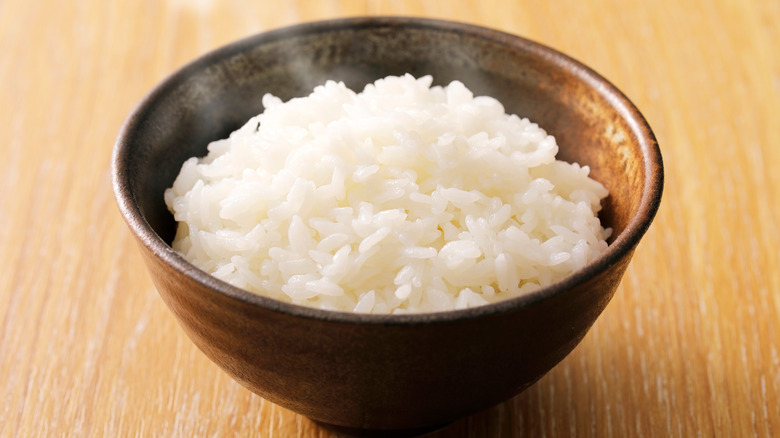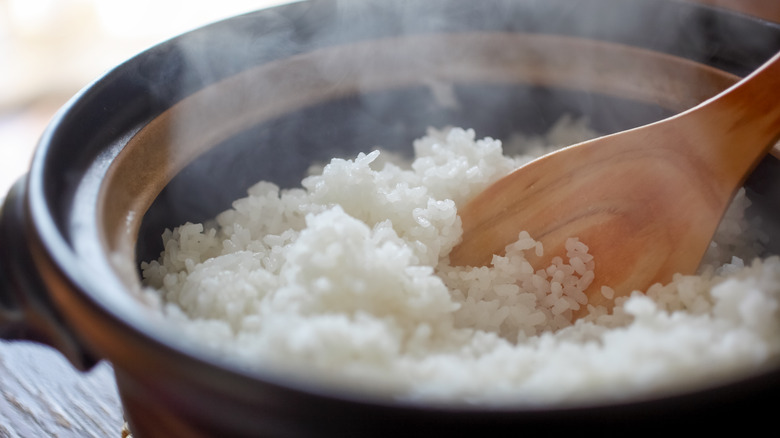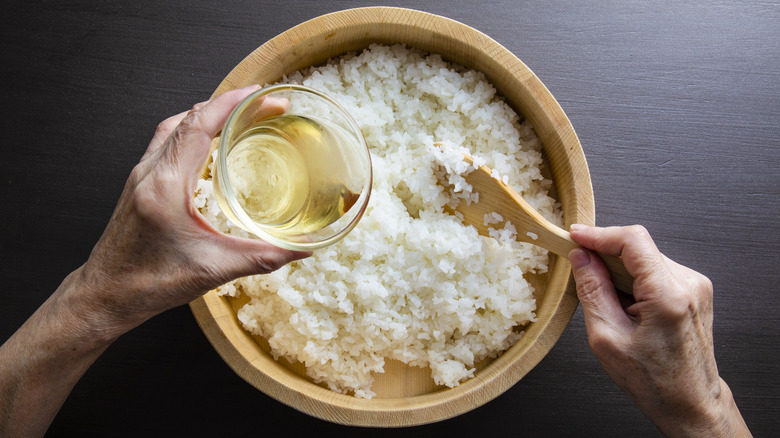The Acidic Secret Ingredient That Makes Rice Fluffier Than Ever
Cooking rice isn't as simple as it seems. While technically all you have to do is add water, the wrong ratio can seriously alter the resulting texture. If you don't add enough, the rice will turn out hard and may even burn, but if you add too much, it might end up resembling oatmeal instead. In order for the rice to become fluffy, it has to absorb the proper amount of water as it steams.
The amount of water you add depends on the type of rice you use, but as long as you measure carefully and follow the proper cooking technique — bringing the rice to a boil and letting it simmer until the water evaporates — it should result in a fluffy texture. Adding a splash of vinegar to the rice can also make the process more foolproof. Though it's typically reserved for sushi rice, adding the acidic ingredient to any variety of rice will help the grains fluff up.
Why vinegar makes rice fluffy
When vinegar is added to sushi rice, it's primarily for flavor. It introduces a distinct tang that complements the overall taste of sushi. Even if you're not making sushi, however, vinegar can be just as beneficial because of how it interacts with starch. Thanks to its acidity, vinegar is able to break down the extra sticky layer of starch sitting on the surface of the cooked rice, which is what normally causes the rice to turn mushy rather than fluffy.
When you don't add vinegar to rice, the starches of each grain of rice naturally stick together, especially when you use a higher amount of water. While there's nothing wrong with sticky rice, if you'd rather it be on the light and fluffy side, vinegar is key because it prevents the rice from congealing together. It's important to add just the right amount though; just enough to create fluffy rice without affecting the flavor.
How much vinegar should you add to rice
Since the point of adding vinegar to rice isn't to improve its flavor (unless, of course, you're making sushi rice), you don't need to add much of it. One teaspoon of vinegar per cup of rice should be more than enough, and if you're cooking it on the stove or in a rice cooker, you can simply add it along with the water. If you're instead using the rice preset on an electric pressure cooker such as an Instant Pot, the process is slightly different.
Vinegar isn't able to properly interact with rice starch in high-pressure environments, so if you add it to your pressure cooker with the water, you'll actually end up with mushy rice. Instead, it's best to add it at the final stage of cooking when the water has already evaporated out but there's still residual steam billowing up from your freshly cooked rice. In this case, you'll want to use up to a fourth cup of rice vinegar for every cup of cooked rice. This will yield slightly more vinegary-tasting rice, but the texture will still be perfectly fluffy.


